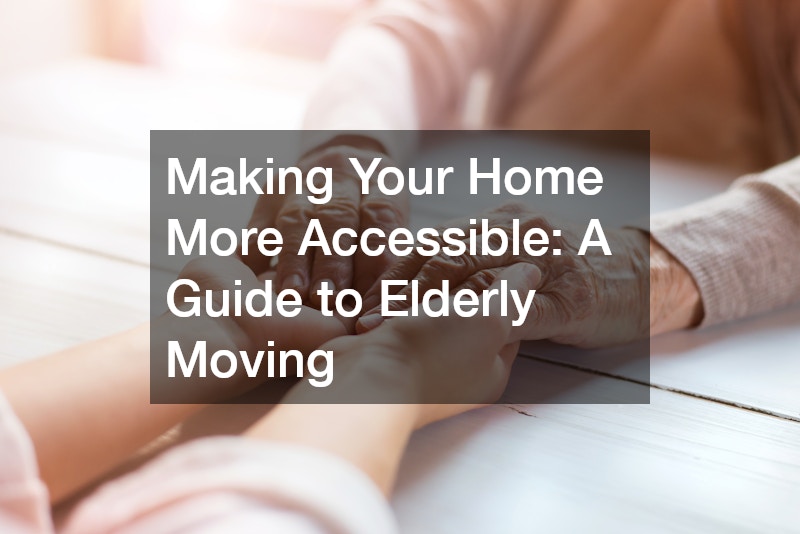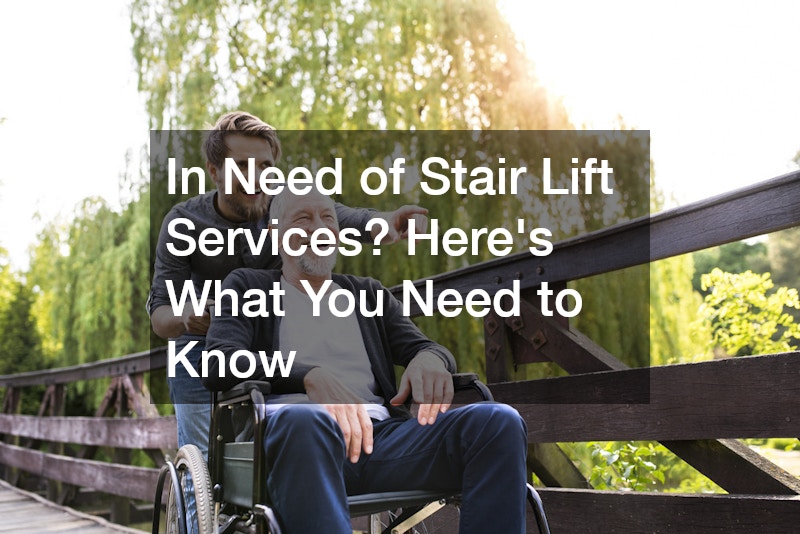Welcome to our guide on making homes more accessible for elderly individuals who are moving. This comprehensive guide will address common questions and provide tips for ensuring a smooth transition.
1. Why is accessibility important for elderly moving?
When it comes to elderly moving, accessibility is crucial to ensure the safety and well-being of the individuals. Understanding the challenges that elderly individuals face can help in creating a living environment that caters to their needs. By making a home more accessible, you can prevent accidents and provide a more comfortable living space for elderly residents.
Creating a safe environment is essential for elderly moving as it can help prevent falls and injuries. Installing grab bars and handrails in key areas of the house can provide support for elderly individuals with mobility issues. Removing tripping hazards such as loose rugs or cluttered pathways can also reduce the risk of accidents.

2. What are the key considerations when moving elderly individuals?
When moving elderly individuals, it is important to assess their current living conditions to determine the necessary modifications. This includes evaluating the layout of the house, identifying any potential safety hazards, and understanding the specific needs of the elderly residents. By assessing the current living conditions, you can better plan for the relocation process and ensure a smooth transition.
Planning for special needs is essential when moving elderly individuals, as it involves considerations such as accessibility, mobility, and medical requirements. This may include installing ramps, widening doorways, or setting up a medical alert system in the new home. By addressing these special needs, you can create a living environment that is tailored to the individual’s requirements.
By considering these key factors when moving elderly individuals, you can ensure that the relocation process is well-planned and successful. Taking the time to assess and plan for special needs can help in creating a safe and comfortable living space for the elderly residents.
3. How can you modify a home for elderly residents?
One way to make a home more accessible for elderly residents is by installing grab bars and handrails in key areas such as the bathroom and stairways. These support features can provide stability and assistance to elderly individuals with mobility issues. Additionally, removing tripping hazards such as loose rugs, clutter, or uneven surfaces can help prevent accidents and injuries.
Another consideration when modifying a home for elderly residents is to ensure that the layout is conducive to their needs. This may involve rearranging furniture to create more open and accessible pathways, as well as making sure that essential items are within reach. By creating a safe and accessible living space, you can help elderly residents navigate their home with ease.
4. What are some tips for downsizing when moving elderly individuals?
One effective tip for downsizing when moving elderly individuals is to sort belongings effectively by categorizing items based on their importance and usage. This can help in prioritizing essential items while decluttering unnecessary belongings. Utilizing storage solutions such as boxes, bins, or shelves can also aid in organizing and storing items during the downsizing process.
When downsizing for elderly moving, it is important to involve the individual in the decision-making process to ensure that their preferences are considered. This may involve discussing which items hold sentimental value, practical use, or emotional significance. By involving the individual in the downsizing process, you can help them feel more comfortable and in control of the relocation.
Utilizing the services of house cleaning companies can also be beneficial when downsizing for elderly moving, as they can help in decluttering, organizing, and cleaning the home. A professional cleaning company has expertise in efficiently managing the downsizing process and can provide valuable support during the transition to a new home.

5. How can technology help in making a home more accessible for elderly residents?
One way technology can help in making a home more accessible for elderly residents is through the use of smart home devices, whether it be in a home addition or a brand-new apartment. These devices can automate tasks such as lighting, temperature control, and security, making it easier for elderly individuals to manage their living environment. Additionally, medical alert systems can provide a sense of security for elderly residents in case of emergencies.
By incorporating smart home devices and medical alert systems, you can enhance the safety and convenience of a home for elderly residents. These technologies can provide peace of mind for both the individuals and their family members, knowing that help is readily available when needed. By embracing technology, you can create a more accessible and functional living space for elderly residents.
6. What are the best ways to ensure a smooth transition for elderly moving?
Communication is key to ensuring a smooth transition for elderly moving, as it involves discussing the relocation process, addressing concerns, and outlining expectations. By communicating effectively with the elderly individual, you can help them feel informed and involved in the moving process. This can also help in alleviating any anxieties or uncertainties about the transition.
By focusing on effective communication and hiring experienced movers, you can help elderly individuals transition to their new home with ease and confidence. These strategies can streamline the relocation process and provide support for the individuals as they adjust to their new living environment.
7. How can you address emotional challenges when moving elderly individuals?
Providing emotional support is essential when moving elderly individuals, as it involves understanding their feelings, concerns, and anxieties about the relocation. By offering reassurance, empathy, and companionship, you can help elderly residents cope with the emotional challenges of moving. This may involve listening to their thoughts, offering encouragement, and validating their emotions.
Allowing time for adjustment is another important aspect of addressing emotional challenges when moving elderly individuals. It is essential to recognize that the transition to a new home may take time, patience, and understanding. By giving elderly residents the opportunity to acclimate to their new living environment at their own pace, you can help ease the emotional burden of the relocation.
8. What financial considerations should be taken into account when moving elderly individuals?
When moving elderly individuals, it is important to budget for moving expenses such as packing materials, transportation, and professional services. By planning ahead and estimating these costs, you can avoid financial surprises and ensure a smooth relocation process. Exploring potential financial assistance options such as government programs, grants, or discounts can also help in reducing the overall cost of moving.
Another financial consideration when moving elderly individuals is to evaluate the value of appliances and furniture to determine if selling, donating, or repurposing them is a viable option. This can help in offsetting moving expenses and reducing the amount of items to be transported. Additionally, hiring house cleaning services before and after the move can help in preparing both the old and new home, ensuring a clean and organized living space for the elderly residents.

9. How can you create a support system for elderly individuals moving to a new home?
Involving family members and friends in the home or apartment mover process can help in creating a support system for elderly individuals. This may involve delegating tasks, providing emotional support, or offering companionship during the transition. By involving loved ones, you can create a sense of community and togetherness that can aid in the relocation process.
Connecting with local community resources such as senior centers, support groups, or health services can also help in creating a support system for elderly individuals moving to a new home. These resources can provide valuable information, assistance, and social connections that can enhance the well-being and adjustment of the individuals. By reaching out to community resources, you can access additional support and guidance during the moving process.
10. What are the benefits of hiring a professional organizer for your moving process?
One of the benefits of hiring a professional organizer for elderly moving is that they can streamline the moving process by providing expertise in decluttering, organizing, and packing. These professionals have experience in managing the logistics of a relocation and can help in efficiently sorting and storing belongings. By entrusting the organization of the moving process to experts, you can save time and reduce stress during the transition.
Professional organizers specializing in senior downsizing and relocation can also offer valuable guidance and support in making decisions about belongings, furniture placement, and home organization. Their expertise in optimizing living spaces for elderly individuals can help in creating a functional and comfortable environment. By leveraging the skills of professional organizers and a local moving company, you can ensure that the new home is tailored to the specific needs and preferences of the elderly residents.
11. What are some common mistakes to avoid in elderly moving?
One common mistake to avoid when moving elderly individuals is rushing the process, as it can lead to overlooking important details or causing unnecessary stress. Taking the time to plan, organize, and execute the relocation can help in ensuring a smooth and successful transition. Ignoring the individual’s preferences is another mistake to avoid when moving elderly individuals, as it can result in dissatisfaction, discomfort, or resistance to the new living environment.
Another mistake to avoid is neglecting the emotional and psychological impact of moving on elderly individuals. It is important to acknowledge their feelings, concerns, and anxieties about the relocation, and offer support and understanding. By addressing emotional challenges with empathy and compassion, you can help elderly residents navigate the moving process with resilience and positivity.
12. What legal considerations should be taken into account when moving elderly individuals?
Updating legal documents such as wills, trusts, and powers of attorney is important when moving elderly individuals to ensure that their affairs are in order. This may involve consulting with legal professionals to review and update existing documents, as well as establishing new arrangements if needed. Ensuring that legal documents are current and reflective of the individual’s wishes can provide peace of mind and security during the relocation process.
Another legal consideration when moving elderly individuals is to have power of attorney arrangements in place to designate a trusted individual to make decisions on behalf of the elderly resident if necessary. This can help in managing financial, medical, and legal matters in the event that the individual is unable to do so themselves. By establishing power of attorney, you can protect the interests and well-being of the elderly resident during the moving process and beyond.

13. How can you ensure the new home meets the medical needs of elderly residents?
Coordinating with healthcare providers is essential to ensure that the new home meets the medical needs of elderly residents. This may involve discussing medication management, mobility assistance, or specialized care requirements with healthcare professionals. By collaborating with doctors, nurses, and caregivers, you can create a living environment that supports the health and well-being of the elderly individuals.
Creating a comfortable and accessible living space is another important aspect of ensuring the new home meets the medical needs of elderly residents. This may involve installing medical equipment such as a motorized screen, adjustable beds, or lifting devices to facilitate daily activities. By optimizing the living environment for medical needs, you can help elderly residents maintain their independence and quality of life.
14. What are some resources available for elderly individuals considering moving?
Senior relocation services are specialized companies that offer assistance in planning, organizing, and executing the moving process for elderly individuals. These services can provide support in decluttering, packing, transportation, and settling into the new home. By leveraging the expertise of senior relocation services, home remodeling experts, and moving companies, you can ensure a smooth and efficient relocation for elderly residents.
Local government programs for seniors, such as grants, discounts, or subsidies, can also provide financial assistance and resources for elderly individuals considering moving. These programs may offer support for housing, healthcare, transportation, or other essential needs. By exploring local government programs, you can access additional resources and support to facilitate the relocation process for elderly residents.
In conclusion, making a home more accessible for elderly moving involves careful planning, consideration of special needs, and creating a supportive environment. By following the tips and considerations outlined in this guide, you can help ensure a smooth and successful transition for elderly individuals moving to a new home.


